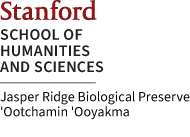Good fire becomes a touchstone of JRBP'O'O mission
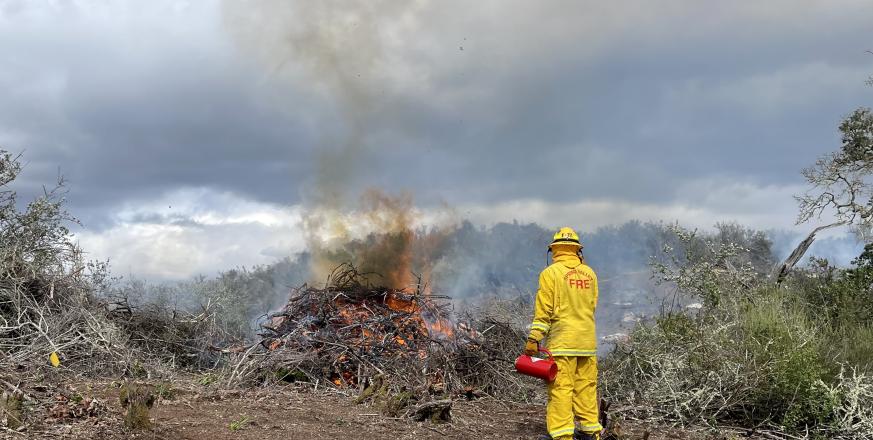
After months of planning, the first week of March provided an excellent prescription window for pile burning at Jasper Ridge Biological Preserve - 'Ootchamin 'Ooyakma (JRBP'O'O) with nearly 200 piles burned! Pile burning was selected as one of multiple tools to reduce and remove fuels to create a fuel break along key perimeter areas of the preserve for mitigating wildfire risk. These efforts are part of the land stewardship mission at JRBP'O'O, with this project also being part of the overall Stanford Wildfire Management Plan to mitigate wildfire risk across all university lands, with Jasper Ridge being the only place burning was used.
Our methods and tool selection for the preserve was guided by our white paper which outlines recommendations for fuel reduction stewardship practices that maintain biodiversity and ecosystem function. This involves: 1) clearly understanding and communicating risk (pros/cons) associated with different tool use, 2) focusing on maintaining ecological integrity when designing and implementing fuel reduction plans, and 3) continued monitoring, expert engagement, and communication to feed back into adaptive management strategies for long-term stewardship of the land. See our blogs from September 2023, December 2023, and February 2024 to learn more about how this project has developed.

Four images to illustrate (from left to right): 1) cut chaparral vegetation, 2) construction of piles in fall 2023, 3) scratch lines added in spring 2024, and 4) piles burned to create a 100ft fuel break along the JR'O'O fence line. Photo credit: JR'O'O staff
The use of multiple tools for fuel reduction at Jasper Ridge, such as chipping, grazing, mastication, and burning has opened up the opportunity for researchers to study the impact of disturbance and fire on the landscape. As we interweave research with stewardship, these projects will help us understand and apply ecologically sensitive approaches as we enter the adaptive management phase of fuel reduction for risk mitigation. Pile burning specifically supported eight research projects where multiple research groups are looking at pre- and post-fire conditions to study biogeochemical responses, soil isotopes, soil moisture, soil entomopathogenic organisms, seed and vegetation recovery, smoke particulate matter, and nutrient & metal concentrations in water & sediment. The multiple scientists involved in the pile burn project are joining us from several research groups: Global Ecology and Climate Solutions Lab, Soil and Environmental Biogeochemistry Lab, Climate and Energy Policy Program, Community Ecology Group, and the Life and Landscape Lab.
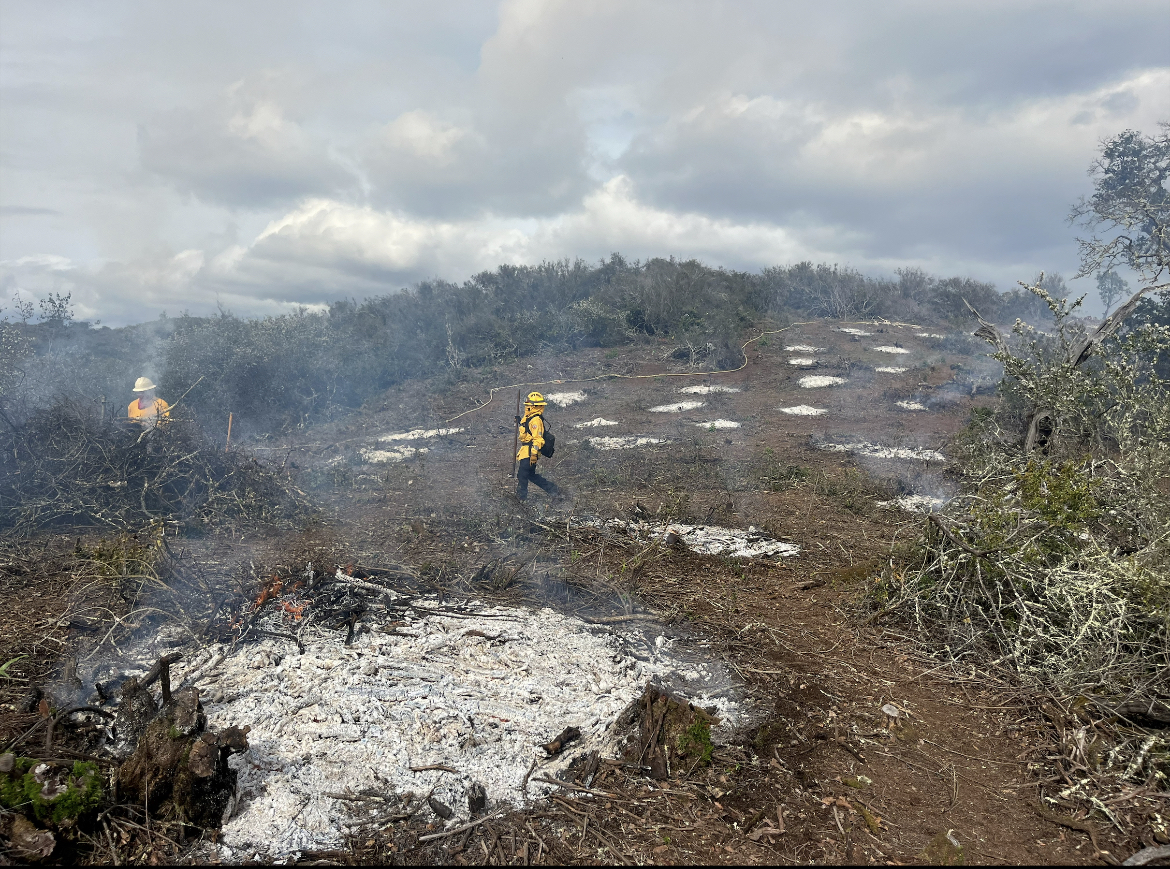
Circles of white ash where piles were burned in the Mapache gate area of Jasper Ridge which created a 100 ft wide fuel break in the chaparral vegetation between the fence line and the interior of the preserve. Photo credit: JRBP'O'O staff
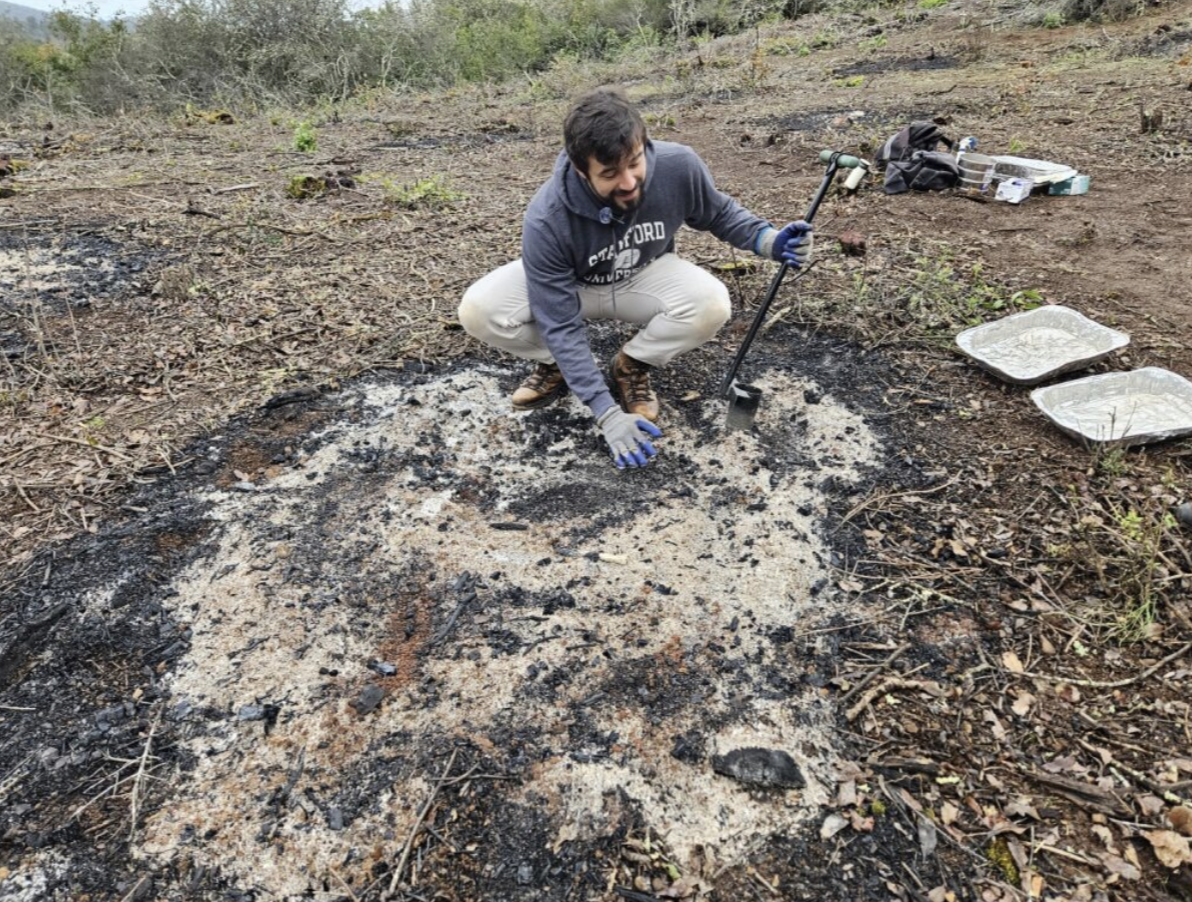
Post-doctoral researcher Amaury Thomas Payelleville (Fukami Lab) taking post-burn soil samples to study the effects of fire on entomopathogenic communities under and around pile burns. Photo credit: JR'O'O staff
Braiding together stewardship with education took on many exciting forms during the pile burn event. It allowed us to engage with Stanford professors and instructors for them to bring their students to directly observe the project first-hand and engage in discussion during burn activities. Building on our new vision of two-eyed seeing and integrating it in our stewardship, we were very fortunate to have several members of the Muwekma Ohlone Tribe join us on the first s of burning with a special ceremony and prayer. Learn more about this meaningful connection in a blog post here. Additionally, three Stanford students, who are certified type II wildland firefighters, were also part of the burn crew. Zander Opperman, Georgia Scarr, and Aidan Fay, who have all participated in burn crews around the Bay Area were especially delighted to be part of the unique burn project on university lands.
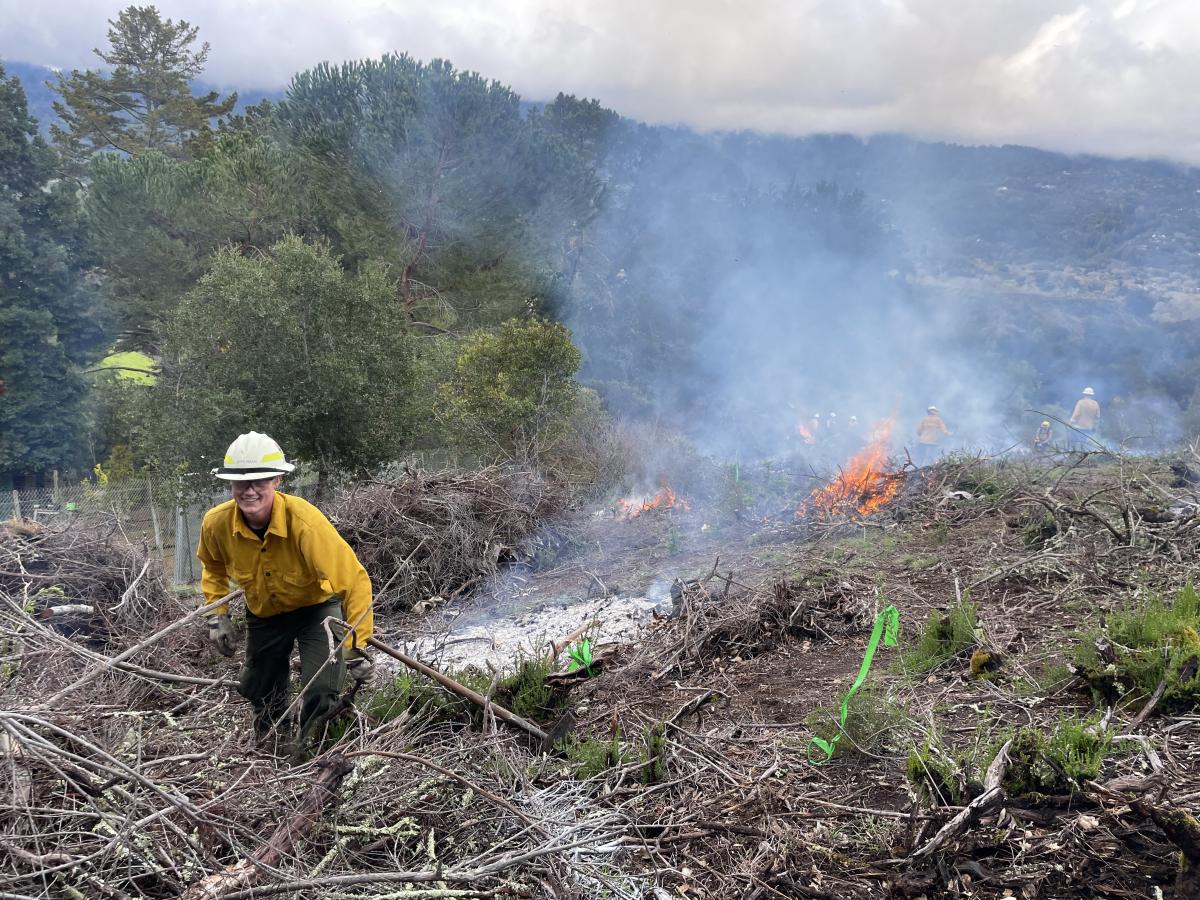
Stanford student Zander Opperman is a certified type II wildland firefighter who joined the burn crew with other fire-trained personnel to burn at Jasper Ridge. Photo credit: JRBP('O'O) staff
Zander is a Living Lab fellow who's project involves understanding the behavior changes necessary for implementing pile burning for land management. "Burning is always a pleasure, but being able to work on the land that we live and learn on was a real treat. I learned so much as an ecologist, fire practioner, and land manager-- everyone who observed or participated had something to share," he said. Zander authored a case-study report capturing lessons learned, titled Fire on the Ridge.
Jasper Ridge Stewardship Scientist, Sheena Sidhu, discusses the progress of the project with burn crew personnel, Mike Mathiesen and Michael Rhoades. Photo credit: Stephen Harrington, burn crew member.
And with pile burning and fuel reduction at JRBP'O'O being just a piece of the management plan in mitigating wildfire throughout Stanford lands and our neighborhood, this project opened up the opportunity to engage directly with community members in our area where prescribed burning has been uncommon. Through these positive engagements, we had many neighbors offering encouragement and support to this project. This bodes well as, ultimately, pile burning is a project of land stewardship and we will continue to have more stewardship activities in the future that will directly and indirectly impact our community. With many active land management activities required to happen on JRBP'O'O land due to climate change, wildfire risk mitigation, and dam modification, we are committed to finding ways to steward the land through and ecologically sensitive lens and open up opportunities for research, education, and community engagement. The pile burning event was truly a unique event for all of us , and it is just the beginning of using more “good fire” on the land.

JRBP'O'O staff celebrated the burning event with a pile-burn-inspired cake created by Associate Director of Education, Katie Glover! Photo credit: JRBP'O'O staff


